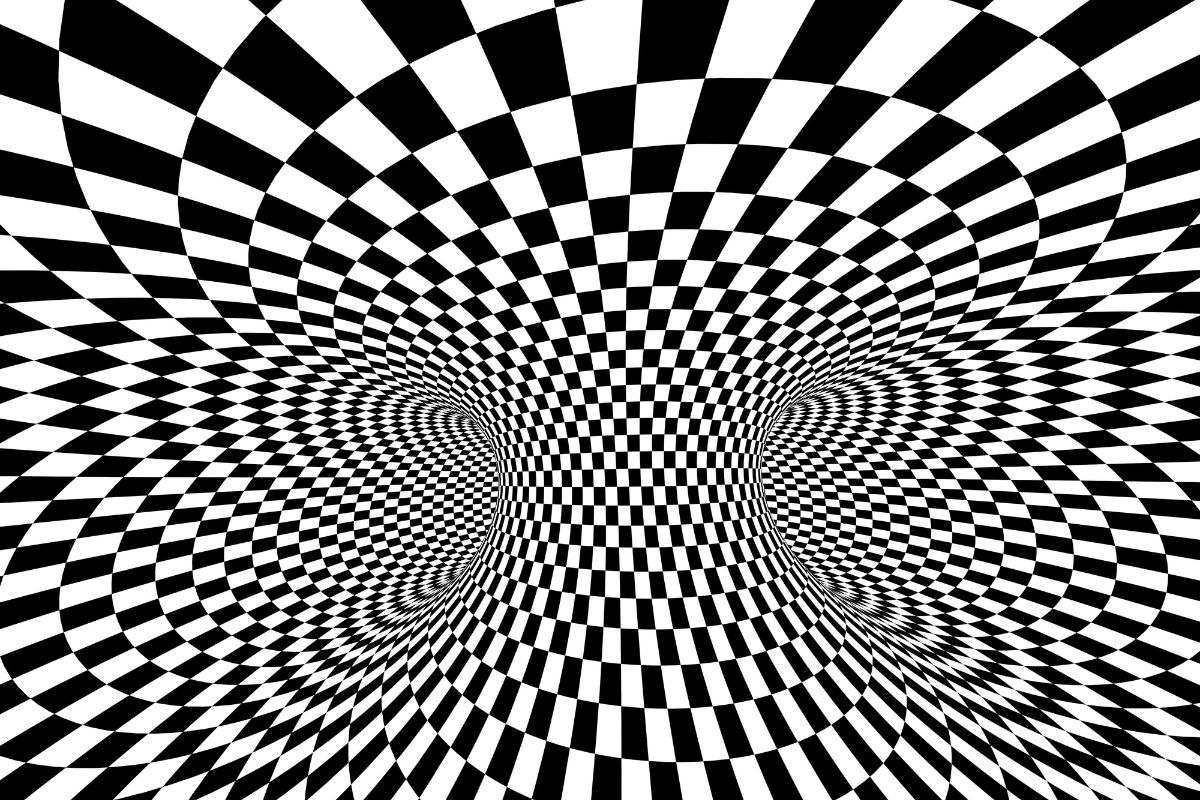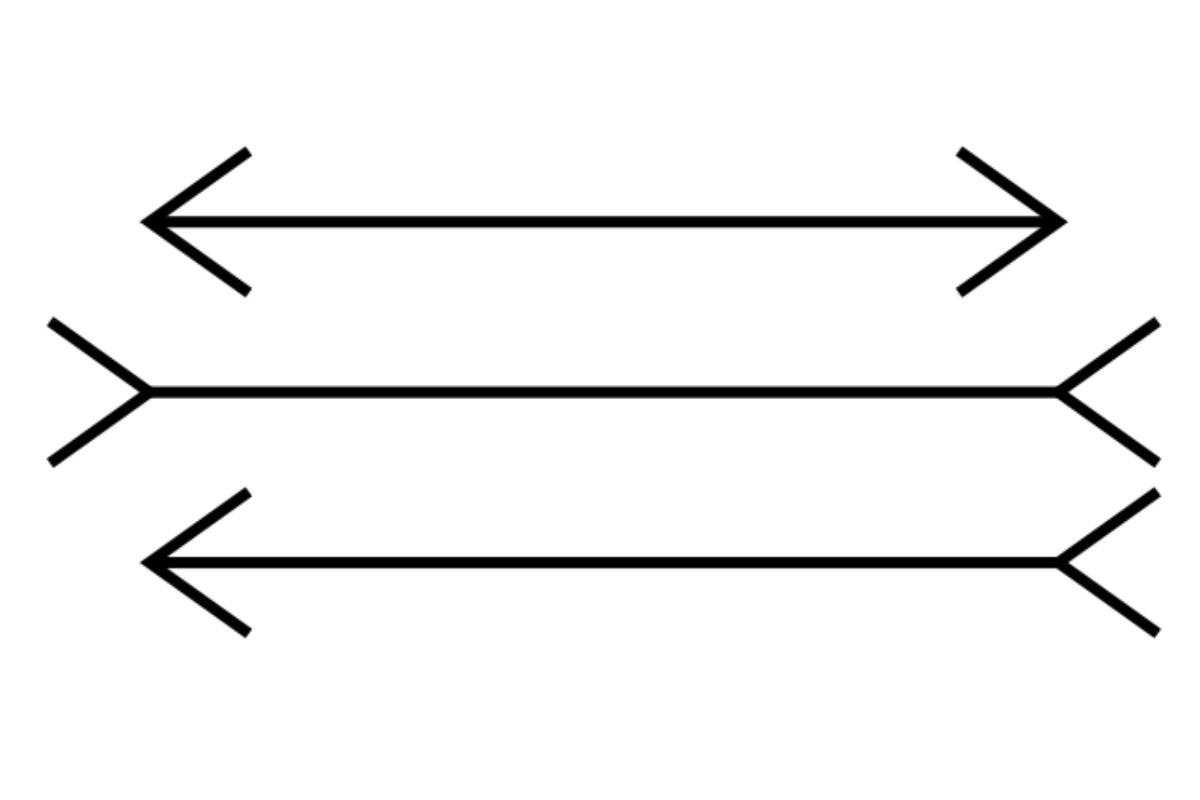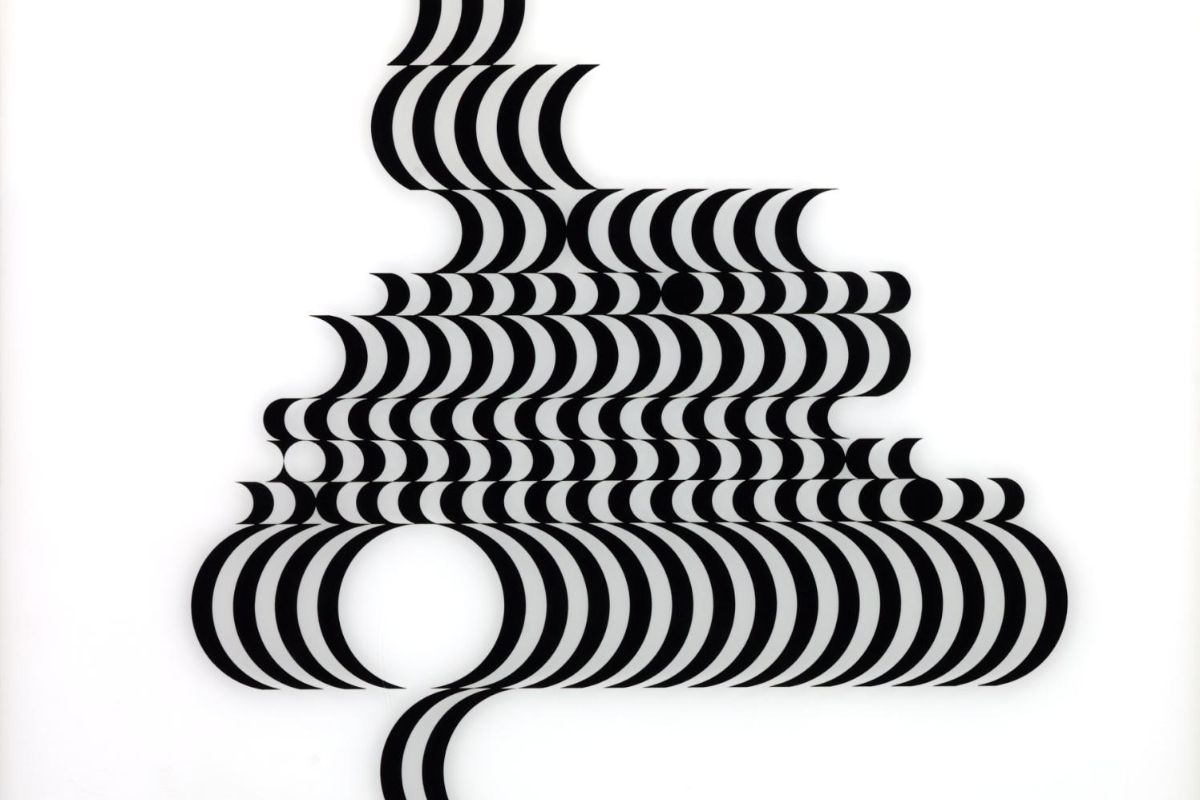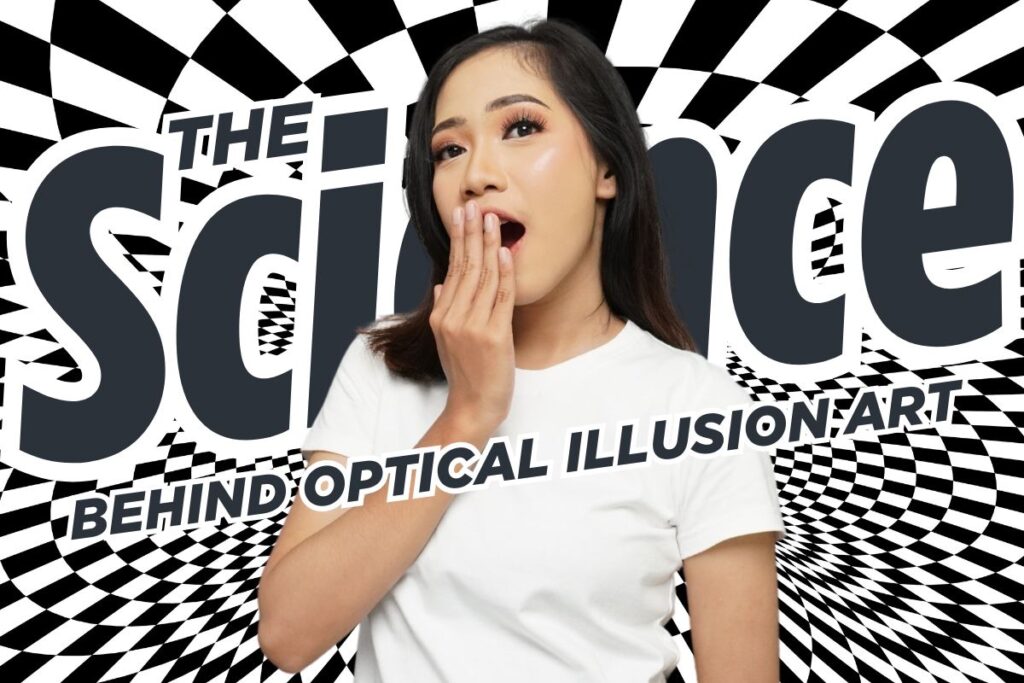Have you ever gazed at a picture and felt as if it was shifting when it wasn’t? Or seen particular shapes that seem to morph depending on how you view them? That is the magic that the eye, alongside the brain, creates while gazing at an illusory art. The science of optical illusion art does not concern itself with tricks; it is concerned with how our brain interprets visuals, light, and space. In this article, we will explain how this type of art works on your eyes, as well as why your brain believes what it sees, even when it’s not there.
What Is Optical Illusion Art
Optical illusion art is a type of art that plays tricks on the eyes. The pictures may look like they are moving, bending, or changing shape—but they’re not. It’s just the way our brains read colours, patterns, and lines. Artists use this technique to make images that feel alive, even though they’re completely still.

In the UK, this style of art became well-known thanks to artists like Bridget Riley. She’s famous for using black and white stripes and shapes that make your eyes think the picture is moving.
Her work first became popular in the 1960s and is now shown in big galleries across the country, including the Tate Britain and the Hayward Gallery in London. Her paintings can make people feel like the walls are shaking or the floor is curving, even when everything is flat.
You can also see this type of art in places like the Paradox Museum in London. It’s full of rooms that bend space and create strange effects. One room might make a person look taller or smaller, just by how it’s built.
These places let people walk through the art and feel it, not just look at it. Families, school groups, and tourists all enjoy how fun and surprising it is.
This kind of art is not only fun to look at—it also shows how powerful our brain is. It reminds us that we don’t always see things the way they truly are. The artist gives us a flat image, but our mind turns it into something else. That’s what makes optical illusion art so interesting and different from normal paintings or drawings.
Also read: Goddess-Inspired: Trendy Roman Dresses for Modern Brides
Science Behind Optical Illusion Art
How Our Eyes and Brain Work Together
The eye feeds information to our brain for interpretation. This phenomenon allows optical illusions to exist, as a viewer’s imagination can fill in the gaps with a moving picture while staring at a static image.

For example, take a look at Müller-Lyer’s optical illusion, which displays two parallel lines located directly above one another at an equal distance. One of the lines has arrow shaped ends and to the viewer, this line appears longer. The reason for this issue is the fact that the brain interprets the angles as depth cues which leads to one line seeming further away thus lengthening it.
Different Types of Optical Illusions
There are several kinds of optical illusions, each affecting our perception in unique ways:
- Literal Illusions: These create images that are different from the objects that make them. For instance, a drawing might look like a face from one angle and a vase from another.
- Physiological Illusions: These occur when our eyes are overstimulated by brightness, colour, or movement, leading to afterimages or patterns that seem to move.
- Cognitive Illusions: These involve unconscious inferences by the brain, such as perceiving motion in a static image due to the arrangement of shapes and colours.
Optical Illusion Art in the UK
Many artists specializing in creating optical illusion art exist in the UK. Bridget Riley, a British painter, is renowned for her black and white artworks that create a sense of movement and depth. Many of her artworks are housed at Tate Britain in London.

Julian Beever is another famous artist who draws three- dimensional illusions on pavement using chalk. One would not believe the illusion until it is viewed from a specific angle. Through his artwork, he intends to change the world’s perspective on street painting.
Experiencing Optical Illusions Firsthand
If you would like to interact with optical illusions first hand, the Paradox Museum in London has exhibits that challenge one’s perception. Visitors can walk through chambers that seem to break the law of gravity or stand in places that distort size and shape.
These events are not only entertaining, but educational about how the senses and the body work in unison. They explain interesting ways in which perception could be altered and remind us that what is seen is not always the complete picture.
Also read: Is the UK and Great Britain the Same? Many Get It Wrong
Conclusion
The optical illusion art demonstrates how effective and smart the human brain can be. What one sees and believes as reality could be a figment of the brain’s interpretation of shapes, light, and space.
Artists and museums in the UK are embracing this art form for the purpose of shocking, educating, and entertaining people of all ages.
From a painting by Bridget Riley to a stroll through the Paradox Museum, one’s understanding of seeing the world fabulously broadens. Such art pieces are not only beautiful but also change issues of perception and call for rethinking.

